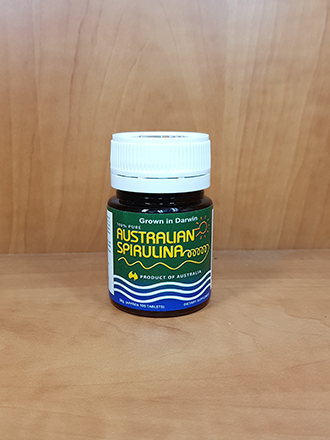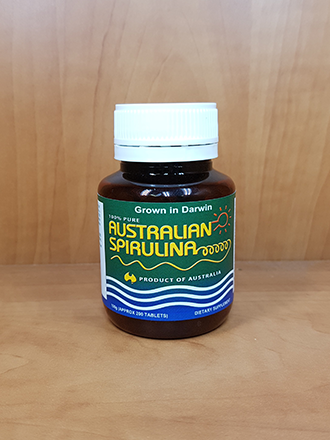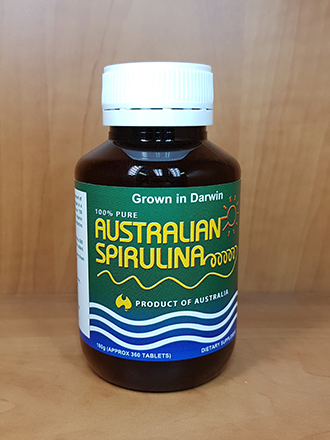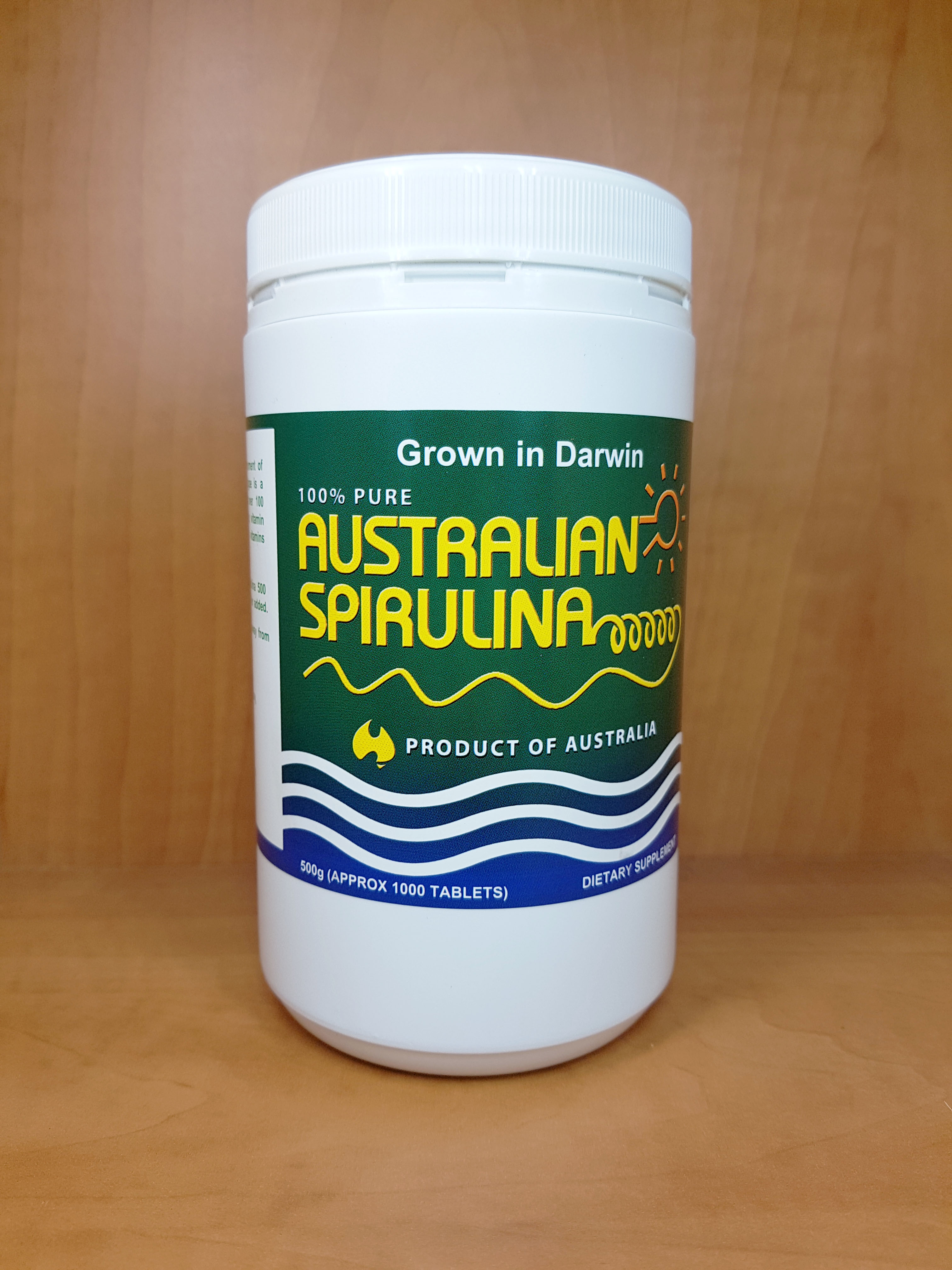Our product - Spirulina
What is Spirulina?
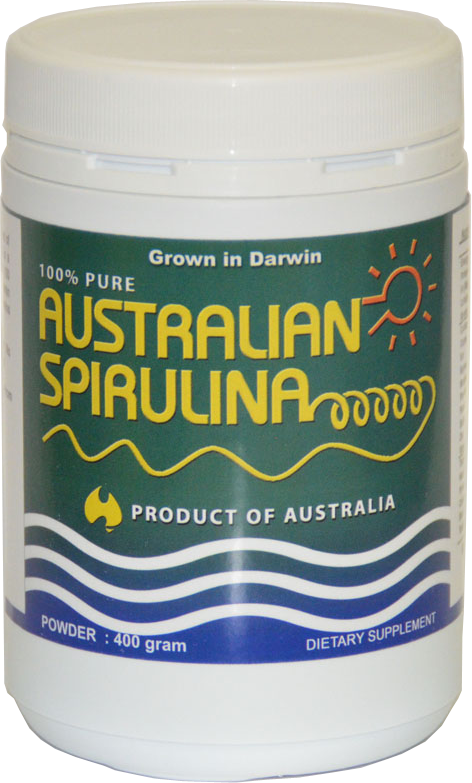
Spirulina is 100% natural and a highly nutritious micro salt water plant. It was discovered in South America and Africa in natural alkaline lakes. This spiral shaped algae is a rich food source. For a long time (centuries) this algae has constituted a significant part of the diet of many communities. Since the 1970's, Spirulina has been well known and widely used as a dietary supplement in some countries.
Spirulina contains rich vegetable protein (60~ 63 %, 3~4 times higher than fish or beef ), multi Vitamins (Vitamin B 12 is 3~4 times higher than animal liver), which is particularly lacking in a vegetarian diet. It contains a wide range of minerals (including Iron, Potassium, Magnesium Sodium, Phosphorus, Calcium etc.), a high volume of Beta- carotene which protects cells (5 times more than carrots, 40 times more than spinach), high volumes of gamma-Linolein acid (which can reduce cholesterol and prevent heart disease). Furthermore, Spirulina contains Phycocyanin which can only be found in Spirulina. In USA, NASA have chosen to use it for astronauts food in space, and even plan to grow and harvest it in space stations in the near future.
Why choose Australian Spirulina?
Australian Spirulina has the best quality spirulina in the world
Australian Spirulina, The worlds most pure Spirulina compared to 24 other products around the world. (inclusive USA, UK,Canada, Japan, New Zealand, India) "Heavy metal analysis in commercial Spirulina products for human consumption" - Al-Dhabi, 2013. This study reveals the concentrations of six typical heavy metals/minerals ( Nickel , Zinc , Mercury , Platinum , Magnesium , and Manganese ) in 25 Spirulina products commercialized worldwide.The result shows that Australian Spirulina (TAAU Australia) beats the rest in terms of purity.
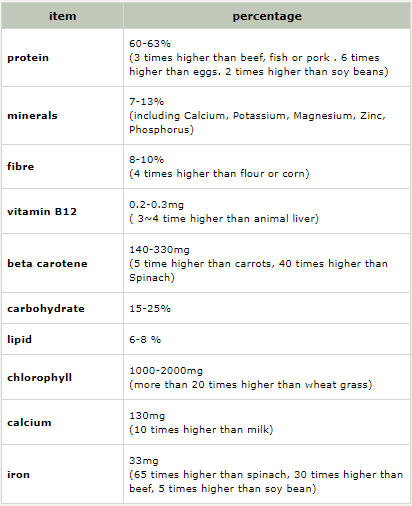
Typical Analysis
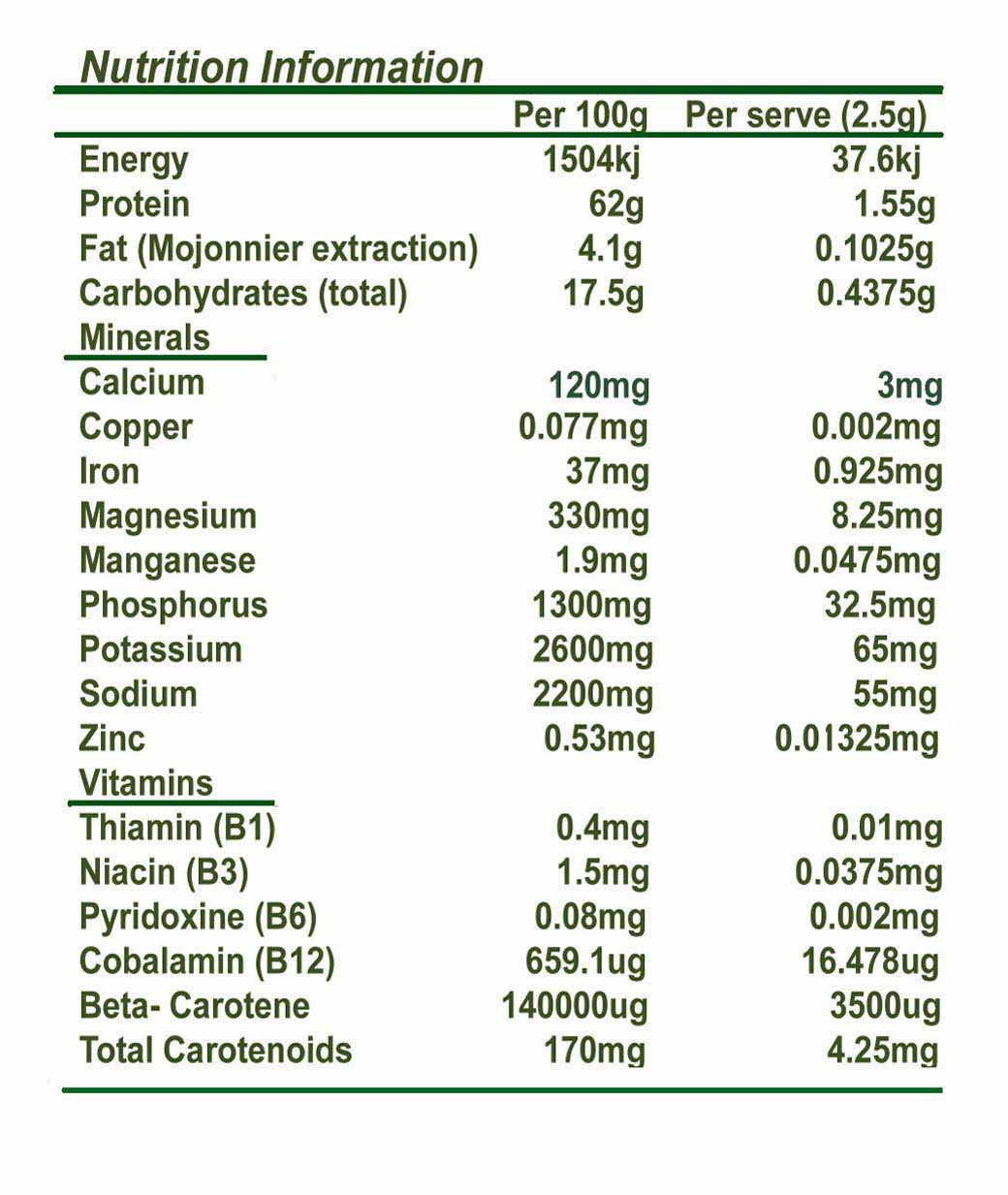
Nutritional information
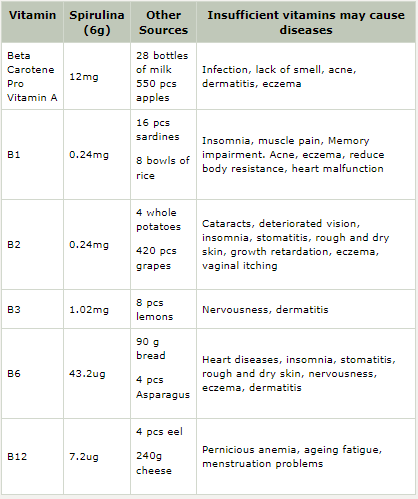
Spirulina compared to other vitamin sources
Why is our Spirulina so expensive?
With so many brands of Spirulina available, you may be asking yourself "Why should I buy your brand compared to other much cheaper options?". Well, just hear us out for a bit as there are multiple factors involved.
Local workforce & supplies
Our operation costs are much higher as we are based 100% in Australia. All our supplies and our workforce are sourced locally to support Aussies and Aussie businesses.
Pollution Free
Instead of importing our Spirulina, we grow our own Spirulina on site in the pollution free parts of Darwin. Using only quality growing mediums and pristine mineral water, this allows us to create Spirulina with the lowest heavy metal content in the world.
100% Spirulina powder
Our Spirulina tablets contain only 100% Spirulina powder and are made without any binders. Our unique tablet system makes this possible however, we sacrifice production speed in doing so. You can find out about the difference between Spirulina tablets by clicking here.
Unique Patented system
Our Spirulina powder is created using an advanced multimillion-dollar patented spray drying system. Using this unique patented system we are able to remove almost 100% of all moisture from the harvested algae in less than 10 seconds. This short processing period minimises the Spirulina's loss of nutrients and retains almost all of its natural goodness. Compared to other drying methods, this allows our tablets preserve the maximum amount of the original nutritional value.
While our product is more expensive than other options, our powder and tablets retain as much of the Spirulina's natural goodness as possible. What we are offering you is a high quality 100% Australian product instead of something that has been imported and repackaged with an Australian label.
Our product
Our Client

Walker
Thank you for your high quality product. This is just my 2nd purchase, but I am satisfied with my 1st.
Walker
Thank you for your high quality product. This is just my 2nd purchase, but I am satisfied with my 1st.

Chris
Your prompt service has been excellent. I have tried other brands over the years BUT none of them come close to your product...
Chris
Your prompt service has been excellent. I have tried other brands over the years BUT none of them come close to your product. The freshness and colour are far superior to anything else I have tried. I have been one of your best advertisements, in telling friends and family of your fantastic product. Keep up the good work, it is appreciated.

Mario
Good on you, guys! We always prefer honest, hard working, Australian producers. I liked the information regarding your manufacturing process...
Mario
Good on you, guys! We always prefer honest, hard working, Australian producers. I liked the information regarding your manufacturing process. It is reassuring to still find companies that are open about their product, having nothing to hide. Thanks.

Ralph
Thank you for all your factual information and saving me from taking inferior spirulina.
Ralph
Thank you for all your factual information and saving me from taking inferior spirulina.

Claire
Spirulina is my food supplement of choice but the problem has always been its unappealing taste and odour...
Claire
Spirulina is my food supplement of choice but the problem has always been its unappealing taste and odour. I always thought this was just spirulina and I would have to find a way to ingest it without ever tasting it. Spirulina has always been associated with an upleasant swampy taste for me. What I didnt realise is just how poor the quality of spirulina I was buying was. All of it big name brands and all of it, awful. When I got your spirulina the first thing that struck me was the irridescent blue-green colour. A colour I had never seen in any other spirulina. Next was the clean and light odour, hardly any. And finallly the taste, or rather lack of it. This is the only spirulina I can ingest as a powder mixed with water. There is no after-taste, and no unpleasant flavours. I realise now that the awful flavours were in fact a sign of a poor product, possibly fraught with contamination. Most spirulina powders and pills are a flat dark green colour, with no hint of blue at all. Strange indeed for a blue-green algae. Yours is so vibrant it almost glows. Spirulina is not a cheap food, all the more reason to get the best value for your money and buy a quality product. What passes for spirulina in most packaging is a low standard product, and anyone who takes this food should try your product to see just how good spirulina can be. I used to take 10gms daily but I find half that is sufficient with yours.

Saran
Thanks Guys for your services. I just found out about this fantastic product and am so proud that it is manufactured naturally here in...
Saran
Thanks Guys for your services. I just found out about this fantastic product and am so proud that it is manufactured naturally here in Australia. I will definately be returning to your site and hopefully i can convince my family to take Spirulina aswell. Wishing you all a Very Merry Christmas & a Peaceful & Enlightening 2012.
Before you buy
Australian made? or New Zealand Made ?
The new country of origin labels are the first thing you want to look for on any Spirulina product. As of 01/07/2018, all food products within Australia will need to comply with the new country of origin labelling laws. Spirulina as a food product must also comply with this new regulation and state its actual % of Australian ingredients. Please be aware that there are many Spirulina products on the market that claim to be “Made in Australia” but are actually made from 100% low quality imported ingredients. If a company’s Spirulina product does not use the new country of origin labels, this is usually a red flag that their product may not be what it claims to be. Prolonged use of low quality Spirulina products can very detrimental to one’s health as they generally contain higher levels of heavy metals and other contaminants.
What can consumers do at this stage?
It's easy, but consumers will need to take some steps to discover the truth. The following are some documents to look for in order to help you identify the source of the Spirulina you are taking.
Growing Licence
If they claim their products are grown or made locally, then you can ask for their Growing License. In Australia a License is required for production of Spirulina. which must be renewed each year.
Click to view our Growing Licence
Certificate of Origin
Whether Spirulina is imported or locally grown, every company should have a "Certificate of Origin" which tells you where they source their Spirulina. (Issued by NT Government)
Click to view our Certificate of Origin
Permit for production
In Australia , Spirulina is classed as a food type or supplement (not medicine), so manufacturers of Spirulina are not required to register with TGA as medicine manufacturers. However, permission from local health department is required.
Click to view our permit for production
Certificate of food Business Registration
All food businesses in Australia must be regularly checked by a local health department to ensure all working environments and systems are according to Australian food Standards. If a Spirulina company is unwilling to provide their certificates or licence, for your own protection, please don't buy their products.
Click to view our Certificate
FAQ
Ask: How does Spirulina grow?
There are four major conditions for growing Spirulina.
- Tropical weather
- Strong sunshine
- Pure water resource
- Pollution free environment
It is not possible to grow Commercial Spirulina culture in a cold or temperate area. Spirulina needs consistent high temperature which helps it’s growth. Spirulina will not grow anywhere that has constant low temperature (under 25 degrees). Under 20c degrees Spirulina will stop reproducing and die in a short time.
Spirulina absorbs sunshine and then creates a reaction in it's cells. When this reaction starts, Spirulina will produce the nutrients in the cell and will convert carbon dioxide into oxygen. Strong sunshine helps Spirulina produce more nutrients.
Spirulina grows in alkaline saline water. Because Spirulina easily absorbs nutrients from water, if the water contains pollution or heavy metals, these will be highly concentrated in the Spirulina cell. If this happens, then this kind of Spirulina is no longer suitable for human consumption.
Ask: What does Spirulina contain?
With over 100 nutrients, Spirulina is often described as the most complete food source in the world. The American National Aeronautical and Space Agency includes it in their astronauts diet and plans to grow Spirulina in it’s space station. It’s easy to see why.
Japan has some good examples of some Japanese seniors who have only relied on Spirulina and water for more than 20 years showing how good is Spirulina for the human body.
Ask: How should Spirulina be stored?
High temperature, moisture or pollution will reduce the beneficial effects of Spirulina.
- Buy and keep no more than 6 months worth.
- After opening the packaging we strongly recommend you use the product within three months.
- After usage, ensure you reseal the packaging as soon as possible.
- Keep the product away from any possible heat source.
- Keep the product away from sun or any exposure to strong light.
Ask: Who should take Spirulina?
- Children who don’t like or get enough vegetables and or have an imbalanced food intake.
- Teenagers during their rapid growing period need a sufficient injection of nutrients. Spirulina is ideal for this.
- Pregnant mums who need extra nutrients.
- Seniors who have difficulty in having reasonable average 3 meals per day.
- Sport lovers or athletics who need extra nutrients to keep their energy levels up.
- Modern busy people who don't have the time to eat good meals.
- Patients or people who need high volumes of nutrients to assist recovery (please consult your doctor)
- Vegetarians who require extra nutrient sources
Ask: Who shouldn't take too much Spirulina?
- People with hyperparathyroidism
- People who have serious allergies to seafood or seaweed
- Patients currently experiencing high fever.
Ask: How much Spirulina should be taken?
We suggest 5~10 tablets a day for adults, 3~5 tablets for children under 12 years old. If you have special requirements for extra nutrients, please consult your chemist or your health practitioner.
Ask: How should Spirulina be taken?
- Take only with cold or warm water, (not juice, soft drinks, coffee or tea)
- After taking Spirulina, avoid alcohol, soft drinks or coffee for 30 minutes as these drinks can destroy some of the Spirulina's nutrients and enzymes
- Take at least an extra half litre of water a day
- It doesn't matter if you take it once a day or twice a day, so long as you take enough for a day.
Ask: What are the side effects of Spirulina?
Spirulina is a totally natural product and will not normally cause any problems to the body. Even if too much is taken, there will be no harm to the body, but ding this is a waste.
However some people may experience some of the following symptoms after taking Spirulina;
- Slight fever due to the body's need to burn the extra protein from Spirulina
- Slight dizziness. If this occurs, take less of the product. If the symptom does not improve please stop taking Spirulina
- Thirst and constipation. After taking a high volume of Spirulina we recommend at least an extra 1/2 litre of water per day to help our body absorb the Spirulina
- Stomach ache
- Skin itch or slight body rash
Ask: Vegetable(Spirulina) protein vs animal protein which is better?
Spirulina contains more than 60% vegetable protein, which is much higher than fish, pork, or beef (which contains about 15 ~20 %).Animal protein is a much bigger molecule than vegetable protein, and is much harder to for our system to digest.
Most modern people overindulge in animal protein, by eating fish, beef, pork etc. When too much animal protein is eaten, it is deposited in our body as fat. Too much fat will cause high cholesterol levels and may impact our heart and blood vessels.
Vegetable protein is water soluble, and is much smaller than animal protein. If you eat too much vegetable protein, it is simply discharged by your system as waste and not stored as fat.
Animal protein is a much bigger molecule than vegetable protein, and is much harder to for our system to digest.
Ask: Whats the deal with Spirulina & Heavy metals?
Spirulina easily absorbs the nutrients from any possible source. Like putting a dry sponge in water, Spirulina will take in just about everything from the water and store it in their cells. So, taking Spirulina from polluted areas may result in some negative results as the Spirulina will absorb all the heavy metals from the growing environment.Possible sources of pollution include:
- Air
- Water
- Dirt/Dust
- Feed
Air pollution will bring lead, mercury etc. All commercial Spirulina is grown in open areas,for maximum production yield. Water pollution is another issue. Most Spirulina production sites need plenty of water to compensate for high evaporation. If the water contains any heavy metals which will accumulate in the growing system, then the Spirulina will absorb it. Water pollution is a big issue as even the water pumped from the sea or surface can contain certain amounts of possible pollutants which will eventually accumulate in Spirulina. This is why some other brands suggested that infants or pregnant women should not take Spirulina.
Our company, based in Darwin in the Northern Territory , uses only pure crystal clear mineral water. Having this exceptional growing environment, our Spirulina has the lowest heavy metal content in comparison with any other Spirulina product on the market, with almost no heavy metals at all.
For a detailed growing water analysis report please click on the link: Water Analysis results
The heavy metal international guide line is no more than 20 ppm, Australian Spirulina is consistently less than 0.5 ppm (Hg, Cd, Pb, As).
Ask: Is spirulina a food? or a medicine?
As we all know, some of our illnesses are caused by having insufficient nutrients in our body. These illnesses are just the symptoms to show us that we may be lacking in some nutrients. If we replenish these nutrients in time, the symptoms usually disappear. If not, we can lower the function of our immune system causing further problems.
In most cases people will go to consult their doctor and may be prescribed some medicine.Spirulina is not a medicine, but when used as a good source of supplementary food, you can avoid nutrient deficiencies causing illness.The topic of Spirulina is currently quite hot for it's therapeutic applications. Medical research has already shown that Spirulina can provide benefits to our body.Spirulina can help you to maintain areasonable levels of nutrients in your body, which will in turn give you less of the chance to get sick.
In USA , Spirulina has been ranked as a food type of supplement (the same as Australia ). Some health benefits claimed for Spirulina have been approved by FDA. However, Spirulina is a food and not a medicine.
In Australia, our top authority; Food Standard Australia and New Zealand ( FSANZ) has clarified that this product should remain as food (food type of supplement), as long as medical or therapeutic benefits are not claimed.
Ask: Where is Spirulina produced?
Spirulina needs tropical weather. Most Spirulina producers are around the equator where spirulina can get maximum sunshine and constant high temperature.
World wide, only a few countries are able to grow spirulina commercially. There are two regions in the USA , ( Hawaii & California ), one in Mexico (may no longer operate), some in China , Taiwan , India and Thailand . We understand Japan doesn't have commercial growing sites (due to low temperature). Japanese companies import Spirulina for their products. There is one research plant in Okinawa , but not for commercial production.
Spirulina is grown in an open area in order to get maximum sunshine. It is not possible to grow Spirulina indoors commercially. So a pollution free environment is essential to grow Spirulina. With industrial pollution getting worse day by day, it's hard to find a country like Australia which has a pollution free environment. Darwin in the Northern Territory of Australia is one of these few pollution free areas in the world.
It's difficult to grow good quality Spirulina. That's why most of the Spirulina manufacturers keep their best products for themselves (sold under their own brand). So the companies that don't produce Spirulina themselves have to purchase lower quality Spirulina and sell their product at lower prices.
It costs more than AU$ 50 to manufacture a kilo of high quality Spirulina powder (excluding packing, making tablets and final processing). On the other hand, the price of low quality products imported from China or India is between AU$15 and AU$20 a kilo. That's why most companies love to use imported Spirulina. However, they are misleading customers by saying "Australian Made". They are providing incorrect and improper information on their labels.
These companies are fully aware of the commercial risk of providing correct information about their source of Spirulina. If they state it, they know they will have difficulty in selling their products at a good price in Australia. So what they normally do is only packaging in Australia and claiming their products are "Made in Australia ", which is misleading all consumers.
